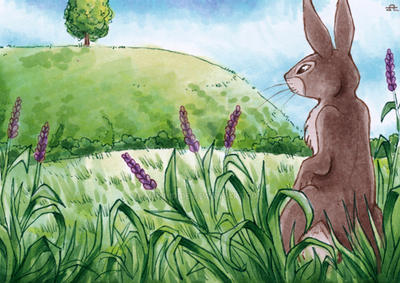How to Write Less-is-More Characters
Part 2: How Your Character Interacts With Others
In part 1 we looked at the different mental states a character can demonstrate, and how we can use that to make a quiet yet memorable character. In this part we'll look at different ways they can interact with others.
As before, I'll be using Colin from It's a Sin as our core example, but I'll include other examples wherever I can.
Types of Transactions
In Transactional Analysis, a transaction is any communication from one person to another. You can read more about it here.
While we don't tend to substitute 'transaction' with the word 'interaction' in formal TA, I think 'interaction' will make this post sound less technical, so that's the term I'll be using.Complimentary
Colin very much prefers to avoid rocking the boat. He’s able to hold a conversation, but he’s not the argumentative type.
Writing your own less-is-more character:
Complimentary interactions make a conversation run smoothly. They feel easy and agreeable, and many people who don’t want to be noticed will default to complimentary interactions to remain unnoticed. Ask yourself:
- What would your character prefer others not to know - unpopular opinions, potentially dangerous or humiliating secrets, etc.?
- How good are they at standing up for themselves?
Another character who demonstrates clever use of complimentary interactions is Hazel from Watership Down, with an honourable secondary mention for Blackberry. While Hazel doesn't especially dislike conflict, he's an average-sized rabbit in a culture where the biggest are usually the ones to get what they want. He uses mainly complimentary (and crossed when necessary, but rarely ulterior) interactions to earn and keep the respect of his warren. It's his use of Adult Ego-State (see part 1) to effectively problem-solve under unusual circumstances, plus his mild-mannered nature, that earns him the respect of the other rabbits.
Crossed
As much as Colin favours complimentary interactions to ensure that his relationships run smoothly and without arguments, he can tolerate crossed interactions, although he clearly doesn't enjoy them - his body language tenses up when he gets cornered into doing this. He usually uses crossed interactions to halt a conversation when he doesn’t like where it’s going.
One of his conversations with his mum demonstrates this. Until late in Colin’s screen time in It’s A Sin he’s closeted to his mother, but after his epileptic seizure she visits him in London and meets his flat-mates, and begins to suspect he's gay. She comments on Roscoe’s eye shadow over dinner as a gentle way to introduce the topic, and he recognises what she's doing. He doesn't want to have the conversation and risk her disapproval, so he tries to shut down the conversation by replying in a way that shuts down further discussion and looking down at his meal. His method for doing this is indirect: he doesn't tell her he doesn't want to talk about it, only acknowledges her observation and offers her no further conversation in the hope that it'll stop, and focuses on his meal as a social barrier to her talking to him any more. She continues the conversation regardless to make sure he knows that she gives her approval of him, and his group of friends. We know that his interaction about 'stop talking to me, I want to eat' was ulterior because he's relieved after she gives him her approval.
Writing your own less-is-more character:
No person or character will fit in with everybody else all the time. We all know somebody who seems agreeable most or all of the time, but even the most agreeable person has unpopular opinions, pet hates or other points of contention, even if they keep secret about it. The question is, how they handle their disagreements with other people. Ask yourself:
- What are your character’s dislikes or unusual opinions?
- What would they defend, even if it makes themselves or somebody else uncomfortable?
Ulterior
One of Colin’s guiding principles is how much he values honesty. That makes being closeted a somewhat dissonant experience for him, and the only reason he remains closeted is his wish to be safe and to avoid disapproval. The only times we see ulterior interactions from Colin are the word-play I mentioned above (which technically doesn’t count as nobody hears him say it so it fails to qualify as an interaction, and he absolutely knows what he’s saying; he’s the one making the joke after all), and his ‘relationship’ with Ross. When he speaks to Ross or says something he knows Ross will hear, he uses ulterior transactions by allowing Ross’ parents to make the heteronormative assumption that any interaction he has with Colin is platonic, if that, and to deduce his meaning as being something different to what it is.
Writing your own less-is-more character:
Ulterior interactions exist to let us say what we truly want to say, but in a way that allows us to deny our true meaning if necessary. A real or fictional person may do this to speak in code or to use dog-whistles. Ask yourself:
- What does your character want but fears backlash about?
In the next part we're going to look at how characters deal with drama in their lives.
Bibliography
Berne, E., Transactional Analysis in Psychotherapy, chapter 9.
Berne, E., Games People Play, chapter 2.
Berne, E., What Do You Say After You Say Hello?, chapter 2.
Credits
Title image by Merinid-DE and used with their kind permission.



